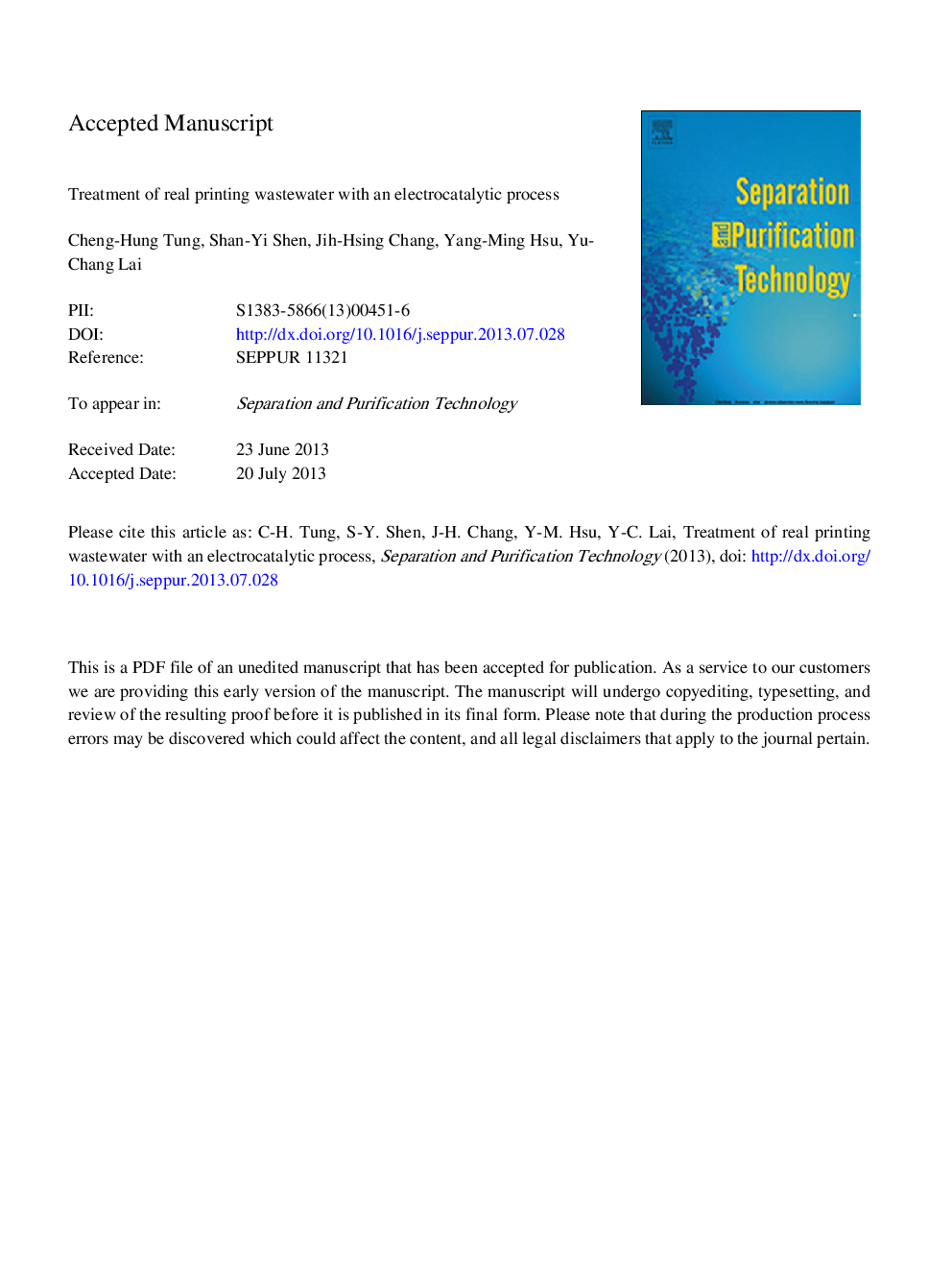| Article ID | Journal | Published Year | Pages | File Type |
|---|---|---|---|---|
| 7044501 | Separation and Purification Technology | 2013 | 25 Pages |
Abstract
Many chemicals used in modern printing processes are either toxic or difficult to decompose, which results in the production of complicated and refractory printing wastewater. In this study, an electrocatalytic technology with different catalytic electrodes was employed to treat a real printing wastewater, and the production rates of hydroxyl radicals were determined. The results indicate that under a voltage gradient of 11Â VÂ cmâ1, the production concentration of hydroxyl radicals by various electrodes followed a decreasing order of TiO2Â >Â DSA (dimensional sustainable anode with IrO2)Â >Â graphite, with the values of 8.21Â ÃÂ 10â3, 5.24Â ÃÂ 10â3, and 0.86Â ÃÂ 10â3Â M, respectively. A lower wastewater conductivity could lead to a greater electric voltage thus contributing to a higher removal efficiency of TOC and chroma. At a current density of 50Â mAÂ cmâ2 and using one pair of electrodes (IrO2Â +Â stainless steel), the TOC and chroma removal efficiencies reached 71% and 53% after 60Â min treatment. Under the same operation conditions but using two pairs of electrodes, the removal efficiencies of TOC and chroma were increased to 75% and 82%, respectively. The removal efficiencies of TOC and chroma could be further raised to 90% and 92% if the electrocatalytic effluent was polished by powder activated carbon absorption.
Keywords
Related Topics
Physical Sciences and Engineering
Chemical Engineering
Filtration and Separation
Authors
Cheng-Hung Tung, Shan-Yi Shen, Jih-Hsing Chang, Yang-Ming Hsu, Yu-Chang Lai,
